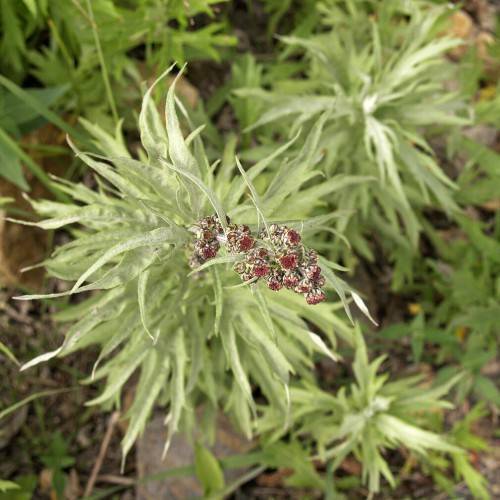
Tilesius Wormwood
Artemisia tilesii
Also Known As - Aluetian Mugwort,Mountain Sagewort,Mountain Sagewort,Mountain Sagewort,Aluetian Muwort,Mountain SagewortWatering:
Minimal
Hardiness Zone:
Flowers:
Flowers
Sun:
full sun,part shade
Fruits:
Fruits Ready In Fall
Leaf:
Yes
Growth Rate:
Low
Poisonous To Humans:
Yes
Poisonous To Pets:
Yes
Salt Tolerant:
Yes
Invasive:
Yes
Care Level:
Medium
watering
Tilesius Wormwood (Artemisia tilesii) should be watered when the top inch of soil has dried out. It prefers a moderate amount of water and does not need to be watered every day. Water it deeply but make sure not to over-water, as this could lead to root rot. During the active growing season, aim to give your plant between 1-2 inches of water per week. Reduce this amount during the winter months. Additionally, if there is a lot of rainfall during the active growing season, you may have to adjust the watering accordingly.
sunlight
Tilesius Wormwood (Artemisia tilesii) thrives in full sun and requires at least 6 hours of direct sunlight per day. This species tends to prefer full sun in the morning, with partial shade in the afternoon. When given sufficient direct sunlight, it will grow vigorously and display its attractive foliage and branches. When temperatures exceed 36°C (97°F), it is beneficial to give this species dappled light or some shade. It can tolerate some short durations of shade, but it is not an ideal species for a deep shade environment.
pruning
Tilesius Wormwood should be pruned in late winter or early spring. Pruning the plant will help to promote a healthy, dense growth habit. The recommended pruning is light to moderate, which can be done by selectively removing any dead or damaged branches and stems. Additionally, pruning will help with providing good air circulation, reduce the risk of disease, and shaped the plant to promote bushier growth. When pruning, it is important not to remove more than 1-third of the existing growth.
